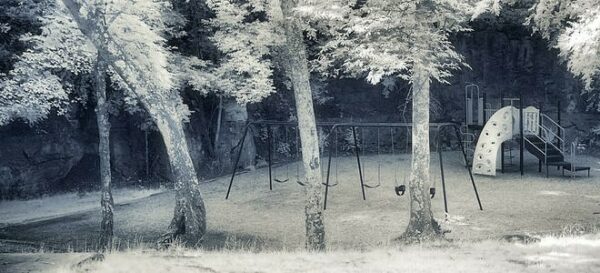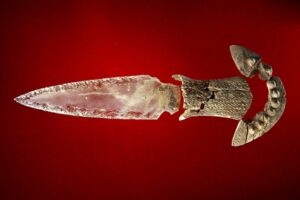Archäologen déi d'Ënnerwaassermetropol Thônis-Heracleion am Ägypten Hafe vun Abū Qīr ausgruewen, hunn Wicker Uebstkuerf opgedeckt daten aus dem véierte Joerhonnert v.
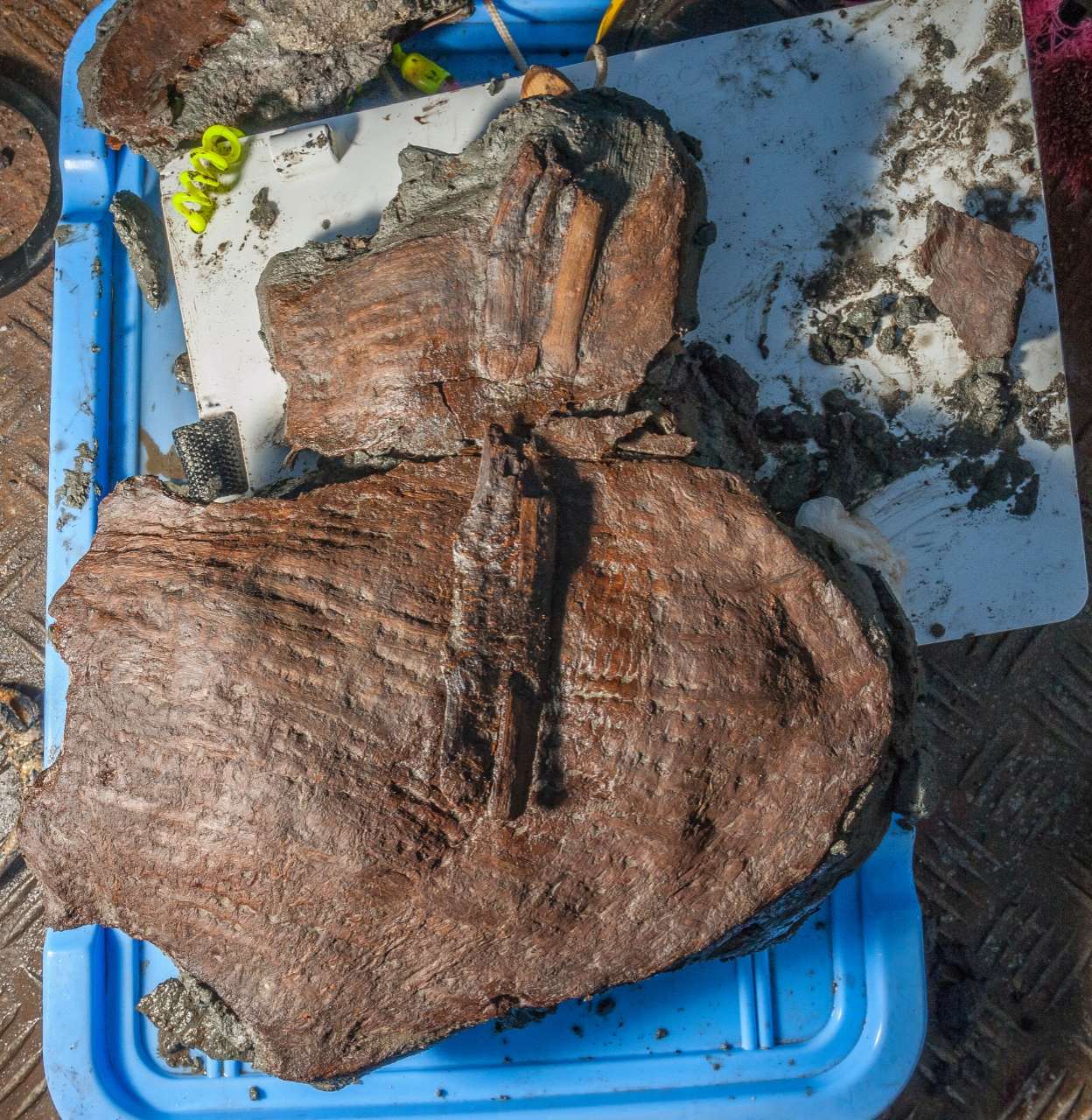
Iwwerraschend enthalen d'Glasen nach ëmmer Doum Nëss an Drauwe Somen, d'Fruucht vun engem afrikanesche Palme, dee vun den antike Ägypter als helleg ugesi gëtt.
"Näischt gouf gestéiert", seet de Marinearchäolog Franck Goddio dem Dalya Alberge vum Guardian. "Et war ganz opfälleg Kuerf vu Friichten ze gesinn."
De Goddio a seng Kollegen um European Institute for Underwater Archeology (IEASM) hunn d'Container an Zesummenaarbecht mam Ägypten Ministère fir Tourismus an Antiquitéiten entdeckt. Fuerscher hunn d'antike Mëttelmier Hafenstad Thônis-Heracleion zanter hirer Neientdeckung am Joer 2001 iwwerpréift, laut Egypt Independent.
D'Kuerf goufen an engem ënnerierdesche Raum gelagert a kënne Begriefnisoffer gewiescht sinn, bericht d'griichesch City Times. An der Géigend hunn d'Fuerscher en 197-x26-Fouss Tumulus oder Kierfecht fonnt, an eng extravagant Gamme vu griichesche Begriefnes Wueren, déi méiglecherweis vun Händler a Söldner wunnen, déi an der Regioun wunnen.
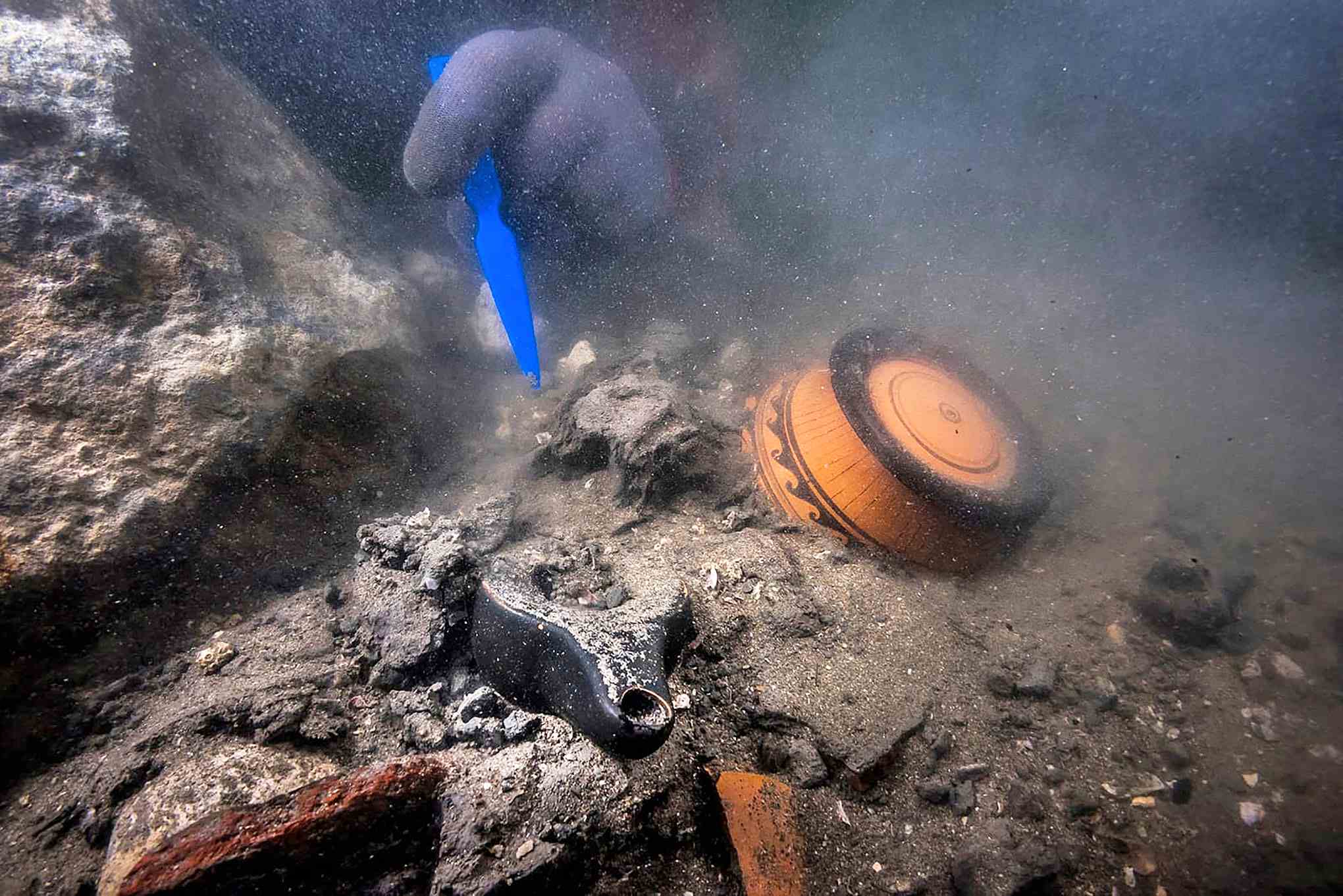
"Iwwerall hu mir Beweiser vu verbranntem Material fonnt", seet de Goddio an enger Ausso, zitéiert vum CNN Radina Gigova. „Spektakulär Zeremonien mussen do stattfonnt hunn. D'Plaz muss fir Honnerte vu Joer versiegelt sinn, well mir keng Objete vu méi spéit wéi dem fréie véierte Joerhonnert v.
Aner Objeten, déi op oder ronderëm den Tumulus fonnt goufen, enthalen antike Keramik, Bronze Artefakte a Figuren, déi den egyptesche Gott Osiris weisen.
"Mir hunn Honnerte vun Depositioune aus Keramik fonnt", seet de Goddio dem Guardian. "Een iwwer deem aneren. Dëst sinn importéiert Keramik, rout op schwaarz Figuren.
Thônis-Heracleion gouf am néngten Joerhonnert v gegrënnt Virun der Grënnung vun Alexandria ongeféier 331 v.
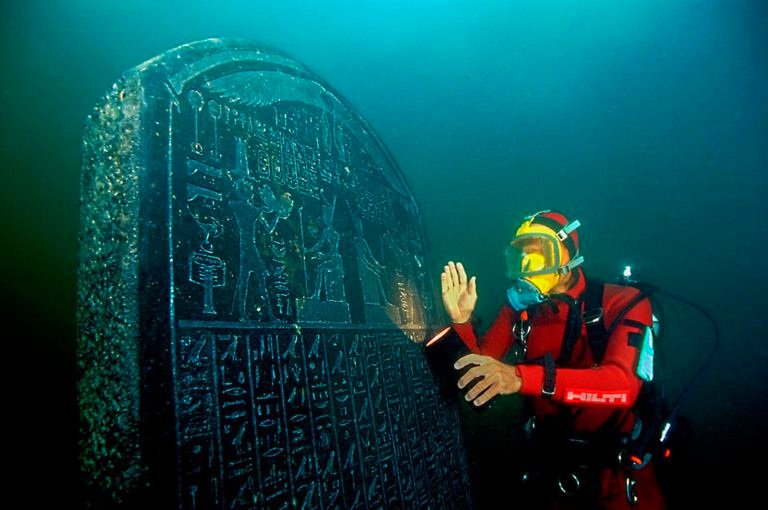
De bléiende kommerziellen Zentrum huet eng Héichpunkt tëscht dem sechsten a véierte Joerhonnert v. Haiser an aner reliéis Strukture stoungen op Inselen bei Thônis-Heracleion
Eemol en Epizenter fir maritime Commerce, ass d'Stad am Mëttelmier am aachte Joerhonnert CE ënnergaangen. E puer Historiker schreiwen dem Ënnergang vun der Metropol un d'Steigerung vum Mieresspigel an Zesummebroch, onbestänneg Sediment, wéi de Reg Little fir Oxford Mail am Joer 2022 geschriwwen huet. Anerer behaapten datt Äerdbiewen a Gezäitewellen e Segment vun 42 Quadratkilometer vum Nildelta an d'Nil-Delta zesummegebrach hunn. Mier, wéi pro CNN.
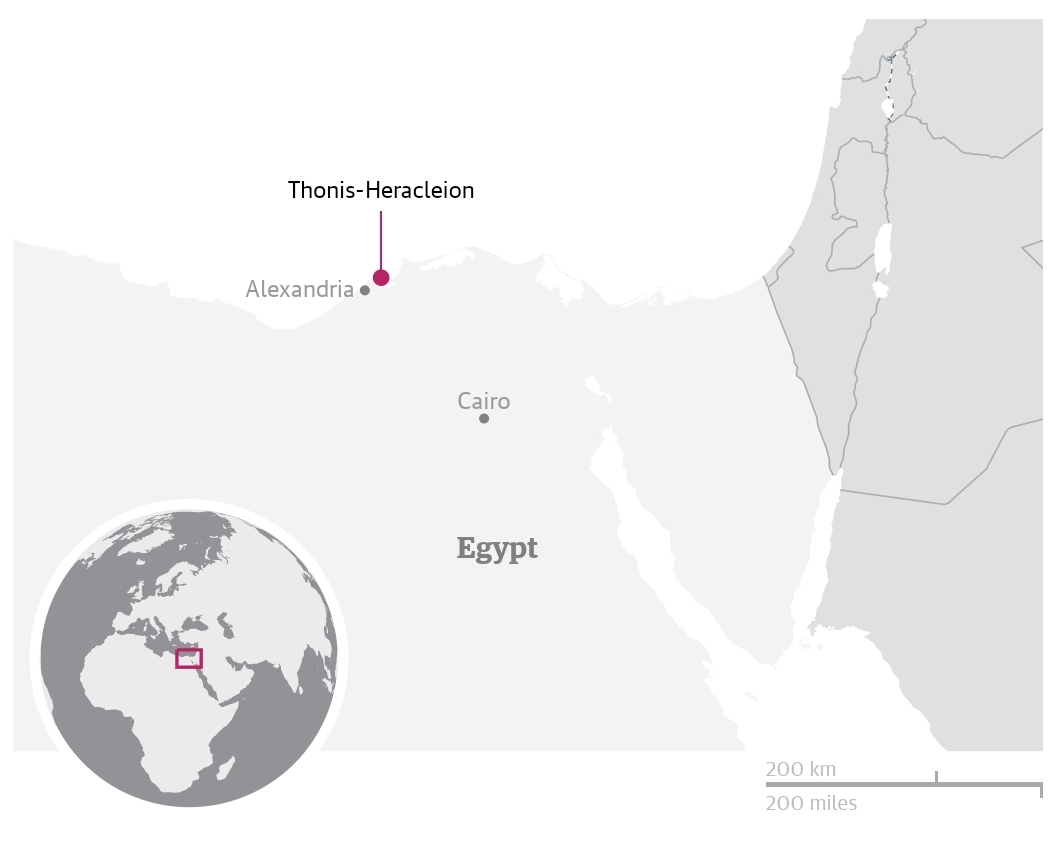
Wéi d'Art Newspaper d'Emily Sharpe am Joer 2022 gemellt huet, hunn d'Experten eemol geduecht datt den Heracleion, referenzéiert vum griicheschen Historiker Herodotus am fënneften Joerhonnert v. En Tablet, deen vum Goddio Team am Joer 2001 fonnt gouf, huet d'Fuerscher gehollef ze schléissen datt déi zwou Plazen d'selwecht waren.
D'Objeten aus de Ruine vum Thônis-Heracleion erholen ass eng ustrengend Aufgab wéinst de Schichten vu Schutzsediment déi se ofdecken.
"D'Zil ass sou vill wéi méiglech vun eiser Ausgruewung ze léieren ouni opdrénglech ze sinn," sot de Goddio der Art Newspaper am Joer 2022.
No der Oxford Mail, aner Fonnt zu Thônis-Heracleion enthalen méi wéi 700 antike Ankeren, Gold Mënzen a Gewiichter, a Partituren vu klenge Kalksteen Sarkophagen déi Schanken vun mummifizéiert Déieren halen. D'Archäologen hunn de leschte Mount e gutt konservéiert Militärschëff aus dem zweete Jorhonnert BCE an enger separater Sektioun vun der Stad entdeckt.
Weider Elementer sollen an Zukunft um Site entdeckt ginn, laut Experten. De Goddio huet dem Guardian gesot datt just 3% vun der begruewe Metropol an den 20 Joer no senger Neientdeckung studéiert goufen.

